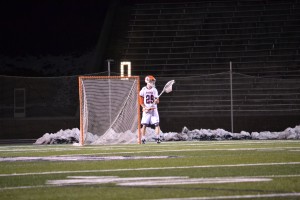Riley Schwengel
Staff Writer
As this year’s House Party Weekend approached, I predicted that we would see another slew of hospitalizations due to excessive drinking. Come Sunday, I was not disappointed. Once again, House Party saw numerous individuals get sent to the hospital because they had too much to drink. The emergency personnel were so busy on the Friday of House Party that I witnessed a group of police and kids wait almost an hour for an ambulance to come for one of the students. That’s purely insane. Luckily this individual was barely over the limit for hospitalization and was not in any immediate danger, but if it had been an emergency and had that person been in real trouble, there could have been a serious problem.
While the sheer number of hospitalizations was shocking to me, what really irked me were other people’s reactions when they heard about the individuals sent to the emergency room. When the number of hospitalized students was mentioned, I often heard, “Well it sounds like this year’s House Party was a success!” in response.
What? I’m sorry, but that does not sound like a success to me. I don’t see how a person ending his or her night with doctors and nurses instead of friends can be seen as reasonable. I think our overall mentality about drinking and partying is heading into a very dangerous and reckless direction, and I worry that if we don’t reevaluate our priorities, we will see more hospitalizations in the future–or worse.
Now I want to be clear: I am not against the drinking culture in general. I acknowledge drinking and partying responsibly and think that they are one of many reasons why college is such an extraordinary experience. I don’t think that we need to make any changes in school policy or even in legislation (though a lower drinking age would be nice). I do think that we need to make some serious changes to our mentality about drinking.
Right now, it seems like drinking is perceived as a competition or challenge, one in which whoever gets the highest score wins. But that’s not how it should be. Drinking is a social event, one that’s not meant to be competitive or aggressive. It should be the individual’s choice about how much to drink, whether to play drinking games, have only a couple drinks or not drink at all. I don’t think students today realize this. There is an extreme sense of peer pressure that forces people to drink in extreme amounts and endanger themselves in order to live up to their peers’ expectations.
Students’ attitudes about drinking have become more and more aggressive in the past couple decades. It has turned from a popular social event to a dangerous competition where even the so-called “winners” can end up in the hospital. I think it’s time we reevaluate how we spend our weekends. Drinking is not some evil vice. It has, in fact, been a staple of the American college lifestyle almost as long as America has had colleges. It is the students who have become reckless and must become more conscious of the risks we are taking when we partake in such activities.
